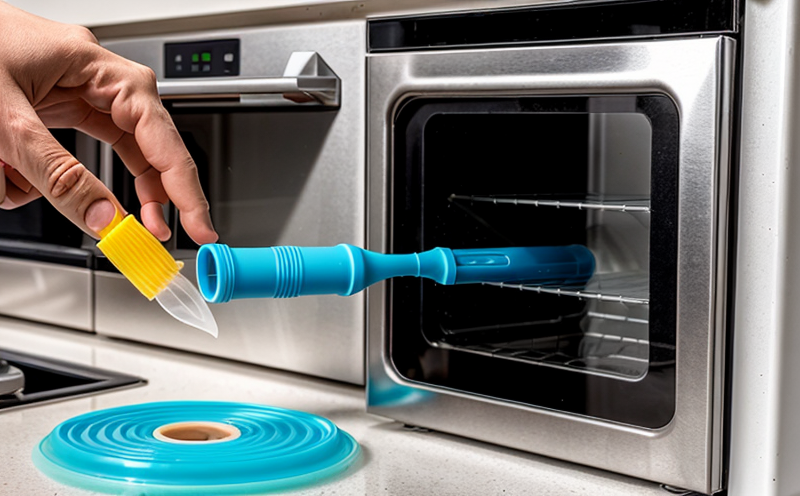ISO 1133 Melt Flow Rate Testing of Household Plastics
The ISO 1133 standard provides a standardized method to determine the melt flow rate (MFR) and melt volume rate (MVR) of thermoplastics. This test is particularly useful for household plastics as it helps in evaluating their processability, flow properties during manufacturing, and thermal stability. Understanding these parameters is crucial for quality managers, compliance officers, R&D engineers, and procurement teams involved in the development and production of household items like toys, kitchenware, and packaging materials.
The MFR test involves heating a specified amount of plastic to its melting point under controlled conditions. The material then flows through a die of standard dimensions at a set temperature and pressure. The mass or volume of polymer that flows out within a specific time period is measured as the melt flow rate or melt volume rate, respectively.
For household plastics, this test ensures consistency in product quality by providing quantitative data on how easily the material can be processed into desired shapes and sizes. This information is essential for optimizing manufacturing processes to enhance efficiency while maintaining safety standards. Compliance officers rely on accurate MFR testing results to ensure that products meet regulatory requirements.
R&D engineers benefit from this test as it aids in selecting appropriate raw materials and developing new formulations with improved flow properties. Additionally, understanding the melt characteristics helps in predicting potential issues during injection molding or extrusion processes. For procurement teams, knowing the MFR values allows them to specify suitable suppliers who can deliver consistent quality materials.
The ISO 1133 method is versatile and applicable across various household plastic types including polyethylene (PE), polypropylene (PP), polystyrene (PS), acrylonitrile butadiene styrene (ABS), and nylon. Each type exhibits unique melt behavior which impacts its processing efficiency. By conducting MFR tests, manufacturers can tailor their production methods to suit the specific needs of each polymer type.
A typical household plastic item may contain multiple polymers blended together for enhanced performance characteristics such as toughness or flexibility. The MFR test helps in assessing how well these blends perform under different processing conditions. Engineers use this information to fine-tune their designs ensuring durability and safety without compromising functionality.
In summary, ISO 1133 melt flow rate testing provides critical insights into the behavior of household plastics during manufacturing processes. It supports quality assurance efforts by offering objective measures of material performance that can be used throughout product development cycles. This ensures compliance with international standards while facilitating innovation in polymer technology.
Applied Standards
The ISO 1133 Melt Flow Rate Testing method is widely recognized and implemented globally due to its reliability and repeatability. It adheres strictly to International Organization for Standardization (ISO) guidelines ensuring consistent results across laboratories worldwide.
Specifically, the standard specifies the temperature ranges (190°C to 230°C), load forces (2.16 kgf or 21.6 N for small samples; 5 kgf or 49.03 N for large samples) used during testing, and time intervals (10 minutes). These parameters ensure that all labs follow the same protocols when performing MFR tests, thereby enhancing comparability of data.
The standard also includes detailed instructions on specimen preparation which involves cutting the plastic sample into small cylindrical pieces approximately 12mm long with a diameter ranging from 9.5 to 10mm. The cut specimens must be free from defects and have smooth surfaces before being placed in the extruder barrel.
For household plastics, the standard allows for modifications based on specific material properties or product requirements. For instance, some household items may require testing at lower temperatures if they contain additives that could affect melt flow rates at higher temperatures.
The ISO 1133 method has been adopted by many countries including the United States through ASTM International (ASTM D1238) and Japan via JIS K7219. Compliance with these standards is often mandatory for businesses operating within those jurisdictions, making MFR testing an integral part of quality control procedures.
Benefits
Implementing ISO 1133 melt flow rate testing offers numerous advantages to manufacturers producing household plastics. Firstly, it ensures that the final products possess desirable physical properties such as ease of processing and good mechanical strength.
Secondly, by identifying optimal processing conditions early in the development stage, engineers can reduce trial-and-error iterations leading to cost savings in both time and resources. Thirdly, consistent MFR results contribute significantly towards maintaining brand reputation through reliable product quality.
Forth, compliance with international standards like ISO 1133 helps companies avoid legal disputes arising from non-conforming goods. It also facilitates smoother trade relations between suppliers and customers by ensuring mutual understanding of product specifications.
Finally, accurate melt flow rate measurements enable better decision-making regarding raw material selection and supplier evaluation processes. This not only enhances supply chain efficiency but also fosters innovation within the industry by promoting research into new materials with improved performance attributes.
Quality and Reliability Assurance
To ensure high-quality results, laboratories must adhere strictly to ISO 1133 procedures. This includes maintaining precise control over environmental factors such as temperature, humidity, and laboratory lighting which can influence the outcome of tests.
Regular calibration of equipment is crucial to avoid measurement errors. The extruder used for testing should be regularly checked against known standards to ensure accuracy. Additionally, operators must undergo training specific to ISO 1133 procedures so they understand all aspects of specimen preparation and data interpretation correctly.
Laboratories accredited by reputable bodies such as the International Laboratory Accreditation Cooperation (ILAC) or recognized national accreditation services provide assurance that their methodologies meet international standards. Such accreditations signify adherence to rigorous quality management systems ensuring consistent, reliable outcomes.





